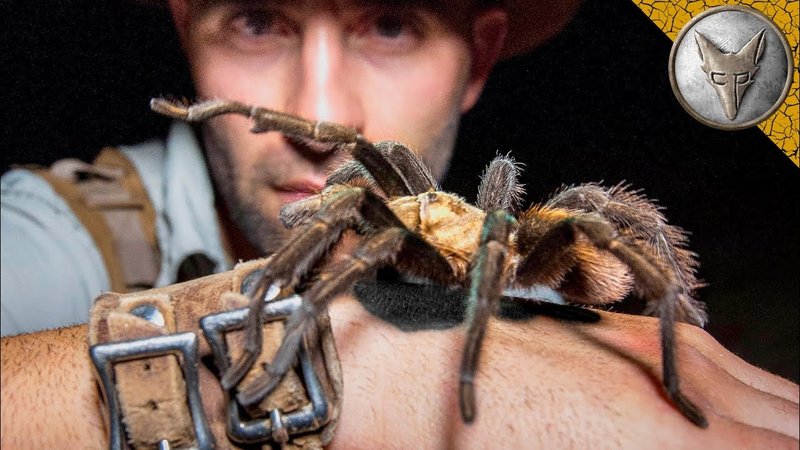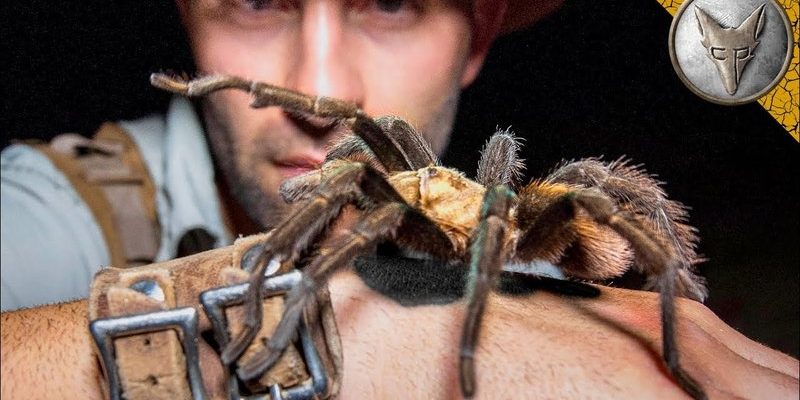
Well, let’s dive into this. First, imagine a dog. Some dogs bark loudly and seem intimidating, but they’re really just big softies at heart. The Goliath Birdeater is kind of like that. It has a fearsome reputation, but understanding its behavior and bite can put things in perspective. So grab your coffee, and let’s explore this intriguing creature together!
What Is the Goliath Birdeater?
The Goliath Birdeater, scientifically known as *Theraphosa blondi*, is an impressive sight. It can have a leg span of up to 12 inches—about the size of a dinner plate! These spiders are generally brown or black and have a hairy body, which can give them a fluffy appearance. They reside in the dense rainforests of countries like Brazil and Venezuela, making them a part of a unique ecosystem.
These spiders don’t just creep around aimlessly. They’re skilled hunters, mainly eating insects, but they can also take down small birds and mammals. Their hunting techniques include relying on their speed and excellent camouflage to surprise their prey. You might picture it lurking in the leaf litter, waiting for the perfect moment to strike.
What’s really interesting is the Goliath Birdeater’s lifestyle. Unlike many spiders that spin webs, this species prefers to burrow in the ground. They create homes in the soil, which offers them protection and a cozy spot to sleep during the day.
Do Goliath Birdeaters Bite Humans?
You might be wondering about their bite. Yes, the Goliath Birdeater can bite humans if it feels threatened. However, here’s the good news: bites are quite rare. Most encounters with these spiders leave them more frightened than we are! They would much rather flee than attack.
If a Goliath Birdeater does bite, it can be painful—imagine a pinching sensation—but it’s not usually dangerous. Their venom is primarily used to subdue prey. For humans, it can cause mild symptoms like swelling and redness, similar to a bee sting.
Here’s a little story to illustrate: a wildlife photographer once found himself near a Goliath Birdeater. He leaned in for a closer shot, and the spider reared up. Instead of attacking, it scurried away into its burrow. That’s typical behavior; they’re more interested in avoiding confrontation than engaging.
What to Do if You’re Bitten
If you do get bitten by a Goliath Birdeater, don’t panic. Here’s what you should do:
- Stay calm: Panicking can increase your heart rate and make symptoms feel worse.
- Clean the bite area: Use soap and water to clean the site. This helps prevent infection.
- Apply a cool compress: This can help reduce swelling and ease the pain.
- Consider pain relief: Over-the-counter pain relievers, like ibuprofen, can be helpful.
- Seek medical attention: If you notice severe symptoms like difficulty breathing or intense pain, contact a healthcare provider.
Most bites will resolve on their own, and a little care goes a long way!
How to Avoid a Goliath Birdeater Bite
While bites are rare, it’s good to know how to avoid them, especially if you find yourself in Goliath territory. First and foremost, give them space. If you see one in the wild, enjoy the sight from a distance. These spiders are naturally shy and will often retreat if they sense a human nearby.
When hiking in areas where Goliath Birdeaters live, be mindful of where you step. Watch for any burrows, as stepping on one might provoke the spider. If you’re curious about observing them up close, consider visiting a zoo or sanctuary that houses them. There you can learn all about them safely.
Also, it’s helpful to remember that these creatures are essential to their ecosystem. They help control the population of insects and smaller animals. So respecting their space is crucial!
Common Myths About the Goliath Birdeater
Let’s address some myths that swirl around the Goliath Birdeater. One popular myth is that they’re aggressive and will chase after humans. In reality, they’d rather hide than confront you. They’re equipped with defensive mechanisms like a set of sharp, urticating hairs on their abdomen that can irritate predators. But again, this is more for show than actual aggression.
Another myth is that their bite is deadly. While their venom can be painful, it’s not lethal to humans. It might sting and swell, but most people recover quickly without needing medical intervention.
Educating yourself about these fascinating spiders helps to separate fact from fiction. Understanding their behavior can foster respect rather than fear.
In summary, the Goliath Birdeater is a remarkable creature that holds its own in the delicate balance of nature. While it can bite, the chances of that happening are slim if you give it the space it needs. By respecting these spiders and understanding their role in the ecosystem, you can appreciate their beauty without fear.
So next time you hear about the Goliath Birdeater, remember: they might look scary, but they’re just trying to live their lives, just like us. Enjoy the wonder of nature, and maybe stay a little curious about these incredible creatures!

